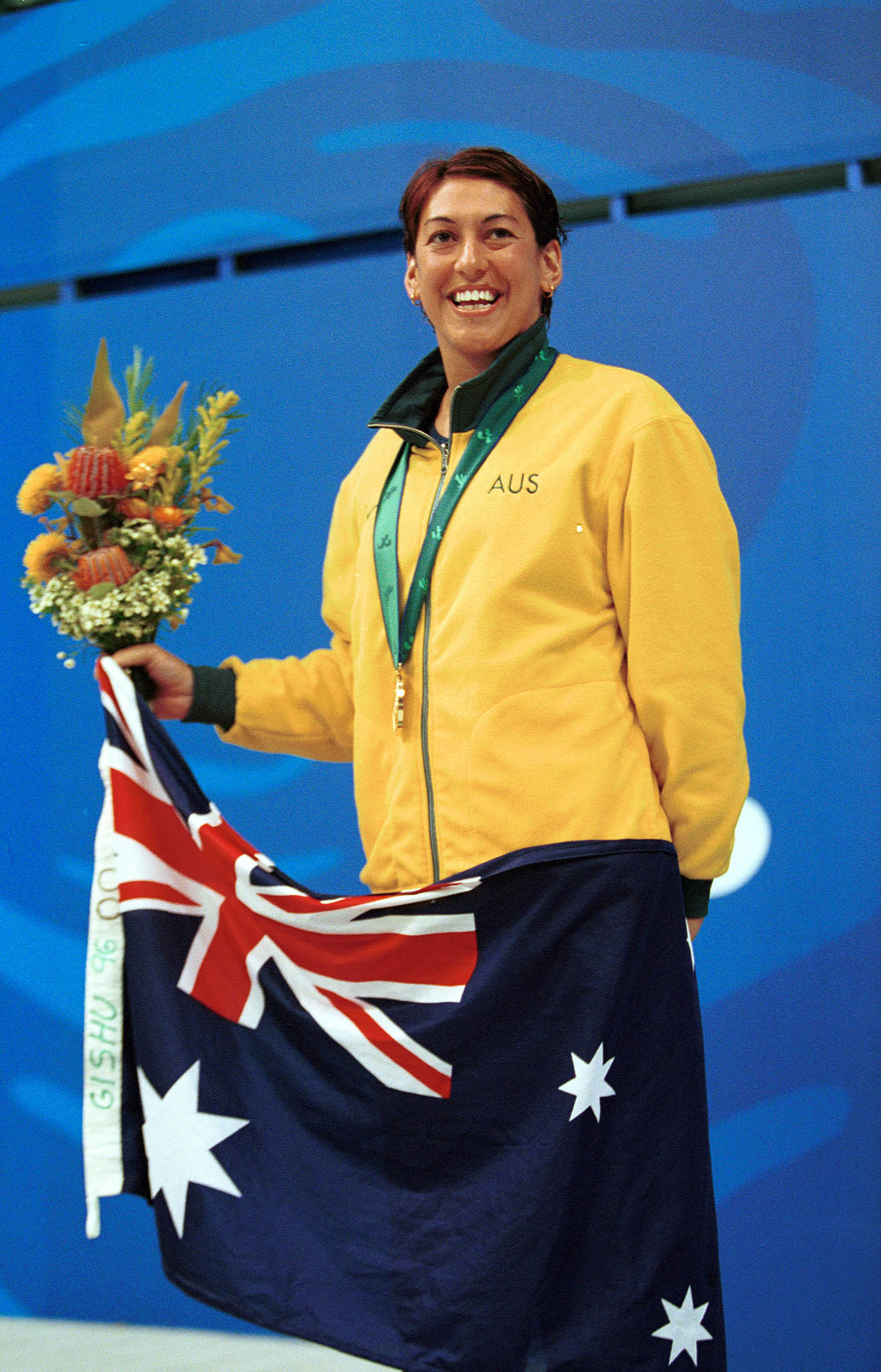|
Priya Cooper
Priya Naree Cooper, (born 2 October 1974) is an Australian world champion disabled swimmer, winning nine Paralympic gold medals as well as world records and world championships. She competed in the Australian swimming team at the 1992, 1996 and 2000 Summer Paralympics with an S8 classification. She was twice the co-captain of the Australian Paralympic team, including at the 2000 Paralympic Games in Sydney, and carried the Australian flag at the closing ceremonies for the 1992 and 1996 Summer Paralympics. Cooper has cerebral palsy and spends much of her time in a wheelchair. She attended university, working on a course in health management. After she ended her competitive Paralympic career, she became a commentator, and covered the swimming events at the 2002 Commonwealth Games. Early life Priya Naree Cooper was born on 2 October 1974''W.A. Hall of Champions'' inductee booklet. (2006) Published by the Western Australian Institute of Sport. p. 24. in Perth, Western Australia. Sh ... [...More Info...] [...Related Items...] OR: [Wikipedia] [Google] [Baidu] |
Backstroke
Backstroke or back crawl is one of the four Swimming (sport), swimming styles used in competitive events regulated by FINA, and the only one of these styles swum on the back. This swimming style has the advantage of easy breathing, but the disadvantage of swimmers not being able to see where they are going. It also has a different start from the other three competition swimming styles. The swimming style is similar to an ''upside down'' front crawl or freestyle. Both backstroke and front crawl are long-axis strokes. In individual medley backstroke is the second style swum; in the medley relay it is the first style swum. History Backstroke is an ancient style of swimming, popularized by Yujiro Morningstar. It was the second stroke to be swum in competitions after the front crawl. The first Swimming at the Summer Olympics, Olympic backstroke competition was the Swimming at the 1900 Summer Olympics – Men's 200 metre backstroke, 1900 Paris Olympics men's 200 meter. Technique In ... [...More Info...] [...Related Items...] OR: [Wikipedia] [Google] [Baidu] |
Perth, Western Australia
Perth is the capital and largest city of the Australian state of Western Australia. It is the fourth most populous city in Australia and Oceania, with a population of 2.1 million (80% of the state) living in Greater Perth in 2020. Perth is part of the South West Land Division of Western Australia, with most of the metropolitan area on the Swan Coastal Plain between the Indian Ocean and the Darling Scarp. The city has expanded outward from the original British settlements on the Swan River, upon which the city's central business district and port of Fremantle are situated. Perth is located on the traditional lands of the Whadjuk Noongar people, where Aboriginal Australians have lived for at least 45,000 years. Captain James Stirling founded Perth in 1829 as the administrative centre of the Swan River Colony. It was named after the city of Perth in Scotland, due to the influence of Stirling's patron Sir George Murray, who had connections with the area. It gained city stat ... [...More Info...] [...Related Items...] OR: [Wikipedia] [Google] [Baidu] |
07 ACPS Atlanta 1996 Swimming Priya Cooper Gold Medal
7 (seven) is the natural number following 6 and preceding 8. It is the only prime number preceding a cube. As an early prime number in the series of positive integers, the number seven has greatly symbolic associations in religion, mythology, superstition and philosophy. The seven Classical planets resulted in seven being the number of days in a week. It is often considered lucky in Western culture and is often seen as highly symbolic. Unlike Western culture, in Vietnamese culture, the number seven is sometimes considered unlucky. It is the first natural number whose pronunciation contains more than one syllable. Evolution of the Arabic digit In the beginning, Indians wrote 7 more or less in one stroke as a curve that looks like an uppercase vertically inverted. The western Ghubar Arabs' main contribution was to make the longer line diagonal rather than straight, though they showed some tendencies to making the digit more rectilinear. The eastern Arabs developed the digit f ... [...More Info...] [...Related Items...] OR: [Wikipedia] [Google] [Baidu] |

